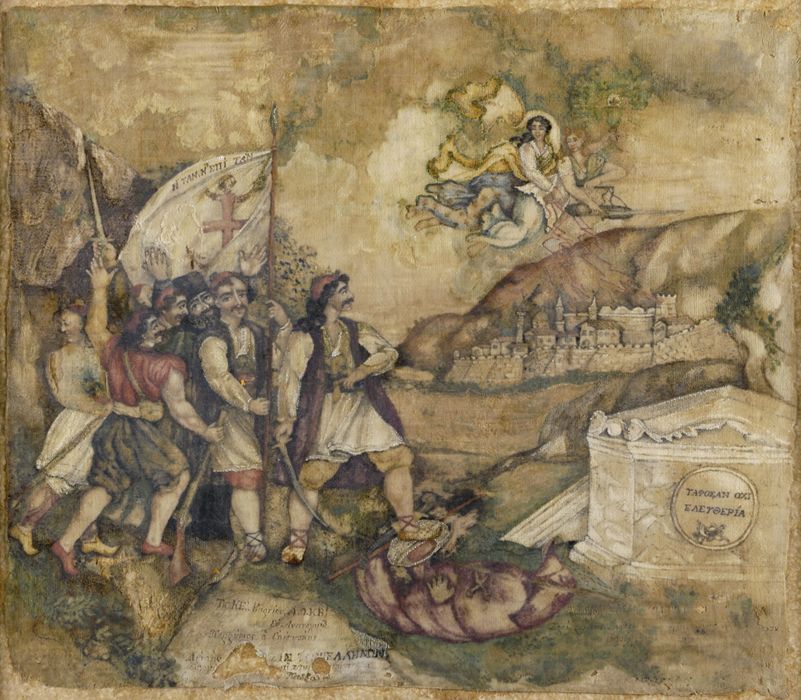Next month will mark the 204th anniversary of the onset of the Greek War of Independence or Greek Revolution (1821-1829), as March 25th was the date chosen to commemorate the ultimately successful uprising that erupted in the Peloponnese, the “heart of the revolution”.
The date also coincides with a major celebration on the Christian Orthodox calendar, the Feast of the Annunciation, thereby adding a distinct spiritual symbolism to Independence Day commemorations by ethnic Greek communities around the world, and of course, in Greece itself.
Nevertheless, the run-up to the Greek Revolution had begun years before March 25, 1821, and in places far from what is Greece today, on the southernmost tip of the Balkan Peninsula, where irregular bands of warriors and bandits sought refuge in the highlands in anticipation of a struggle against centuries of Ottoman suzerainty and oppression.
In the month before the start of the uprising in the Peloponnese, then known as the Morea, another protagonist in the seemingly hopeless struggle to carve an independent Greek state out of the ailing Ottoman empire, Prince Alexandros (Alexander) Ypsilantis, was anxious to light the fire of revolution. He was active in another corner of southeast Europe, far from historical Greece, in the so-called Danubian Principalities, modern-day northeast Romania and Moldova.
Ypsilantis was a remarkable man who had served as a senior officer in the imperial Russian cavalry during the Napoleonic Wars before assuming leadership of the Filiki Eteria (Greek for ‘Society of Friends’). The latter was a secret revolutionary organization created in the Black Sea port city of Odessa in 1814 to work to end Ottoman rule over historically Greek lands and establish an independent Greek state.
Taking stock of developments in the Ottoman empire in February 1821, Prince Alexandros was tempted to begin military action immediately, as a civil war had erupted a year earlier between the Sublime Porte–the seat of Ottoman power in Constantinople (today’s Istanbul)–and the powerful Ali Pasha of Ioannina (Yanina). The ruthless rule of the latter extended over an autonomous and increasingly independent territory in what is now northwest Greece and southern Albania.
For the Greek revolutionaries, the timing was auspicious, and the opportunity could not be squandered – although they were not well coordinated or fully ready. Moreover, the preparations and recruitment of members into the Filiki Eteria are soon betrayed to the Ottomans, with terrible consequences for initiated members in Constantinople, for instance.
In his column published in the “Eleftheron Vima” newspaper on May 10 and 11, 1930, the noted author and playwright Spyros Melas writes:
“Word got out about the preparations. Clouds began to gather in the sky. A native of the Peloponnese, Asimakis Theodorou, had left Egypt for Constantinople and betrayed the Filiki Eteria to the Turks. The Sultan’s security apparatus was roused and became more vigilant.”
The betrayal of the Filiki Eteria’s plans added urgency to Ypsilantis’ revolt. He crossed the River Prut into Wallachia in February 1821 at the head of an enthusiastic but poorly trained and undisciplined army that would be shattered and scattered after the ill-fated battle of Drăgășani just a few months later, in June.
Efforts to spark a revolt among other Christians in the Ottoman-ruled Balkans, such as the Serbs and Montenegrins, had failed, whereas the local populace and nobility in the Danubian Principalities viewed the uprising with suspicion and indifference. Finally, a plan to burn the docked Ottoman fleet in the Bosporus failed to materialize.
However, the dismal failure of the Danubian uprising was the fortuitous spark that lit the fuse of the Greek Revolution in the Peloponnese, in Roumeli (south-central mainland Greece), in a handful of sites in western Macedonia, and a bevy of Aegean islands renowned for their merchant fleets and able seafarers—others might call them audacious privateers.
Ypsilantis’ gambit also served to change the weary and even reactionary attitude many elders and the landed class in the Peloponnese held towards independence, though not the hostility of Constantinople’s Greek Orthodox elite, the Phanariotes, who were integral to the higher echelons of the Ottoman administration and commercial sectors at the time.
“Ypsilantis’s decision to move immediately towards the Danubian principalities was reinforced by a hope that, if he invaded, the allies would decide to revolt in Constantinople, and the bishops and prelates of the Morea would be encouraged and throw themselves into the struggle. Perhaps Milos Obrenović (the leader of the first Serbian uprising) would have left behind his hesitation, too. However, he was now pressed by the paralysis of the Filiki Eteria cadres in the principalities; their way of recruiting and other unsubtle actions,” the column continues, adding:
“Rizos Neroulos writes to him (Ypsilantis) in dismay: ‘The process of recruiting is becoming more and more disorderly by the day; it has reached the point where even young children know of the Filiki Eteria’s initiation rite. Nary a baker nor grocer has been left out… The secret of this society has become known to every local’.”
Writing more than a century later, the author, journalist and historian Yannis Vlachogiannis had this to say about the events of Feb. 16, 1821 in an excerpt included in a sixth-grade textbook from 1952:
“At the Ypsilantis family mansion in Chisinau, Russia (in modern-day Moldova), on the 16th of February 1821…Around the table, four of the five brothers–Alexandros, Dimitris, Nicholas and Giorgis–and, opposite them, two secretaries, Lassanis and Typaldos, are writing the proclamation. The decision has been taken. All that’s left is for the watchword for the struggle to be given and resonate in the hearts of Greeks, shaking the foundations of Turquia.”



